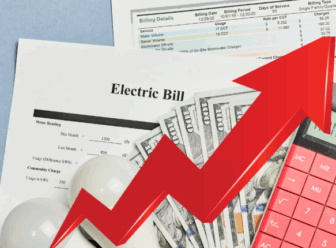 Wind energy development off of Maryland’s Eastern Shore inched closer to reality after federal officials in Baltimore announced that developing wind energy there would not harm the coastal environment.
Wind energy development off of Maryland’s Eastern Shore inched closer to reality after federal officials in Baltimore announced that developing wind energy there would not harm the coastal environment.
In a statement released last week, Secretary of the Interior Ken Salazar – along with Bureau of Ocean Energy Management (BOEM) Director Tommy Beaudreau – released findings from a National Environmental Policy Act (NEPA) assessment indicating there would be “no significant environmental impacts from issuing wind energy leases in areas off the mid-Atlantic Coast.”
This is certainly good news, although it’s also important to recognize that this is but one more step on the road to clean offshore wind energy in Maryland. What Salazar and Beaudreau were essentially saying is that the assessment found no significant environmental impacts from activities associated with issuing renewable energy leases – activities such as geophysical, archeological or biological surveys of potential sites, or the installation of meteorological towers (these towers are used to measure wind speeds, allowing for the most efficient siting of wind turbines). Once a lease is issued, each new project will still require its own individual review:
BOEM will use this environmental assessment to inform future leasing decisions in the mid-Atlantic Wind Energy Areas and to review site assessment plans. If a lessee proposes a wind energy generation project on its lease, BOEM would prepare a separate site- and project-specific analysis under NEPA of its construction and operations plan, and provide additional opportunities for public involvement.
Governor O’Malley, who has made bringing offshore wind to Maryland a primary goal of his 2012 legislative agenda, was on hand when the announcement was made and was understandably “pleased” by the findings:
O’Malley… called the announcement a “big deal” because it has mapped out areas off the coast that the federal government believes can be relatively quickly opened up for wind energy projects without causing environmental harm or conflicting with shipping, fishing or other offshore activities.
Of course, what all of this does is place the focus squarely back on the Maryland Offshore Wind Energy Act (HB 441/SB 237), passage of which is vital to Maryland meetings its requirement of 20% renewable energy by 2022. The 2012 bill would set up a market-friendly process incentivizing offshore wind development while still protecting consumers, and without passage, offshore development would remain nothing more than a dream. So while today’s developments are definitely a step in the right direction, there are still more to be taken to make offshore wind farms a reality.





